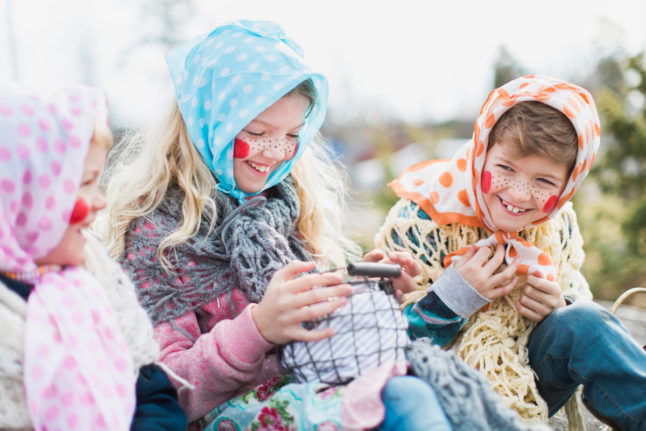Let’s start with grandparents.
Swedish has four different words for “grandmother” and “grandfather”, depending on which side of the family you’re talking about. This may be confusing if your native language doesn’t have this distinction, as you will need to start reminding yourself of your family tree every time you discuss your grandparents in Swedish.
Although most Swedes refer to their mum and dad as mamma and pappa, more formal, less common terms for parents are mor and far, which are the terms still used in the names for grandparents – as well as other relatives.
Danish and Norwegian still use the terms mor and far to refer to “mother” and “father” respectively, which makes talking about your relatives in these languages a bit more intuitive.
Listen to top tips from a Swedish teacher on Sweden in Focus, The Local’s podcast.
Click HERE to listen to Sweden in Focus on Apple Podcasts, Spotify or Google Podcasts.
First off, let’s look at your maternal grandparents, or morföräldrar (“mother parents”). These are your mother’s mum and dad.
To refer to your mother’s parents, you would use mormor (“mother-mother”) for your grandmother, and morfar (“mother-father”) for your grandfather.
So what about your paternal grandparents? They’re referred to as your farföräldrar or “father parents”. Your father’s mother would be your farmor (“father-mother”), and your father’s father would be your farfar (“father-father”).
So to recap: your mum’s parents are mormor and morfar, and your dad’s parents are farmor and farfar.
This also means, bizarrely, that the same grandparent can be called two different names depending on their exact relationship with their grandchild. If a woman has a son and a daughter, for example, her son’s children would refer to her as farmor, but her daughter’s children would call her mormor.
Great grandparents can be referred to in two ways: by adding the word mor or far after the grandparent’s title, such as mormor’s mor (“mother’s mother’s mother”), or farfar’s far (“father’s father’s father”), or by adding the word gammal (“old”) before the grandparent’s title, such as gammalfarmor or gammalmorfar.
Confused? It doesn’t stop there. Your aunts and uncles all have special terms as well. These are similar to the terms for grandparents, in that they trace each family member linking you and your aunt or uncle.
We’ve already covered the word for “mother” in this context: mor. The Swedish words for sister and brother are syster and bror, meaning that your mother’s sister is your moster (shortened from morsyster) and your mother’s brother is your morbror. Your father’s siblings follow the same pattern: faster for your aunt and farbror for your uncle.
This only applies to aunts and uncles you’re related to by birth. Although Swedish does have the word tant for aunts and onkel for uncles by marriage (someone who is married to one of your parent’s siblings), nobody really uses these. You’re more likely to hear Swedes referring to these family members as their farbrors man (“father’s brother’s husband”) or morbror’s fru (“mother’s brother’s wife”) instead.
Nieces and nephews follow the same pattern: your brother’s kids are your brorson and brorsdotter (“brother-son” and “brother-daughter”), and your sister’s kids are your systersson and systerdotter (“sister-son” and “sister-daughter”).
Finally, grandchildren. The general word for “grandchild” in Swedish is barnbarn (“child-child”), which is the word you’re most likely to hear. Although this is becoming more rare, grandchildren can also be referred to using the same system as for other family members: sonson for your son’s son, sondotter for your son’s daughter and dotterson or dotterdotter for your daughter’s son or daughter, respectively.
But what about your cousins? Are they your farbrorsson (father’s brother’s son) and mostersdotter (mother’s sister’s daughter)? Thankfully, no. They’re just your kusiner.



 Please whitelist us to continue reading.
Please whitelist us to continue reading.
The specificity of farfar, morfar, farmors mor, etc is often convenient, but it is annoying that there is no good way to collectively refer to a generation of ancestors. It’s hard to find a way to refer to one’s grandparents or great-grandparents as a group.